Introduction
The miniaturization of embedded electronics and sensors, driven by the rapid development of mobile devices, has enabled powerful avionics systems for very small aircraft. This enables a potential step forward towards accurate flight data acquisition for vehicles of 5 kg or less take off weight. Being able to flight test a small platform like this allows the comparison of the results with reference data from ground testing an identical airframe in a reasonably sized wind tunnel. This enables to answer the following questions: Would such a system then be able to collect accurate flight data for system identification? Is it possible at all to fly a small, remotely piloted aircraft precisely enough to record the required data, given its sensitivity to atmospheric turbulence, airframe noise, limitations of the remote piloting and so on? And, if accurate data has been acquired, how well do the ground- and flight test experiments match? The small scale might potentially uncover previously unknown or at larger scale typically insignificant physical phenomena, which need to be taken into account when flight testing such a small platform. The changes in the inertial pro-perties of the platform due to the added mass effect is one of these typically ignored phenomena. This effect, however, has proven to be critically important for the successful analysis and comparison of the flight- and wind tunnel data obtained throughout this project.
This multidisciplinary thesis can be divided into several distinct parts:


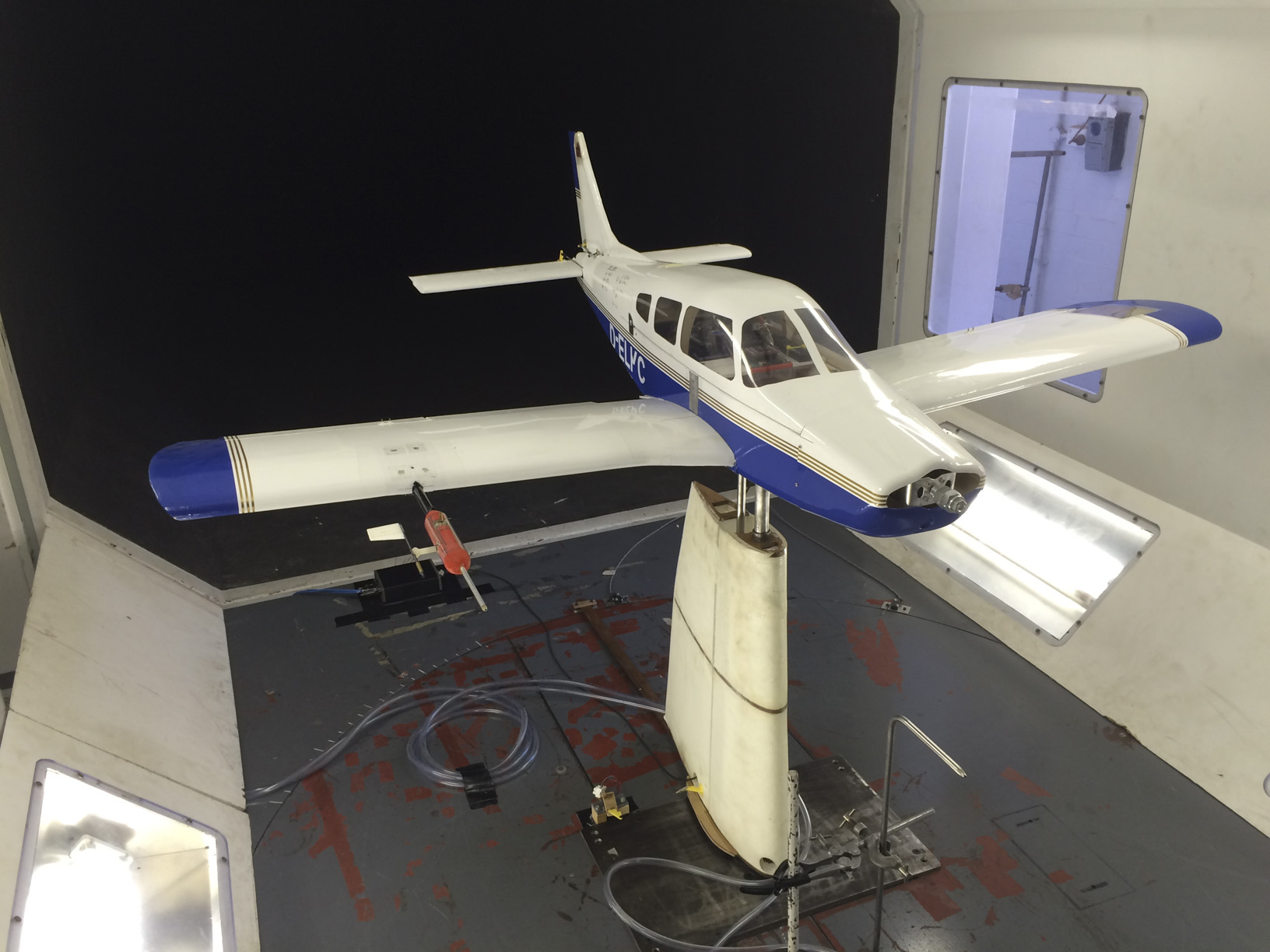
The remotely piloted, fixed wing aircraft used for this research was a scale model of a generic, low wing, general aviation aircraft with 1.5m wingspan and approximately 4kg take off weight, powered by an electric motor. One airframe was used for a series of static and dynamic wind tunnel tests to generate high quality reference data. An identical airframe was flight tested extensively, with data recorded by a custom designed suite of sensors.
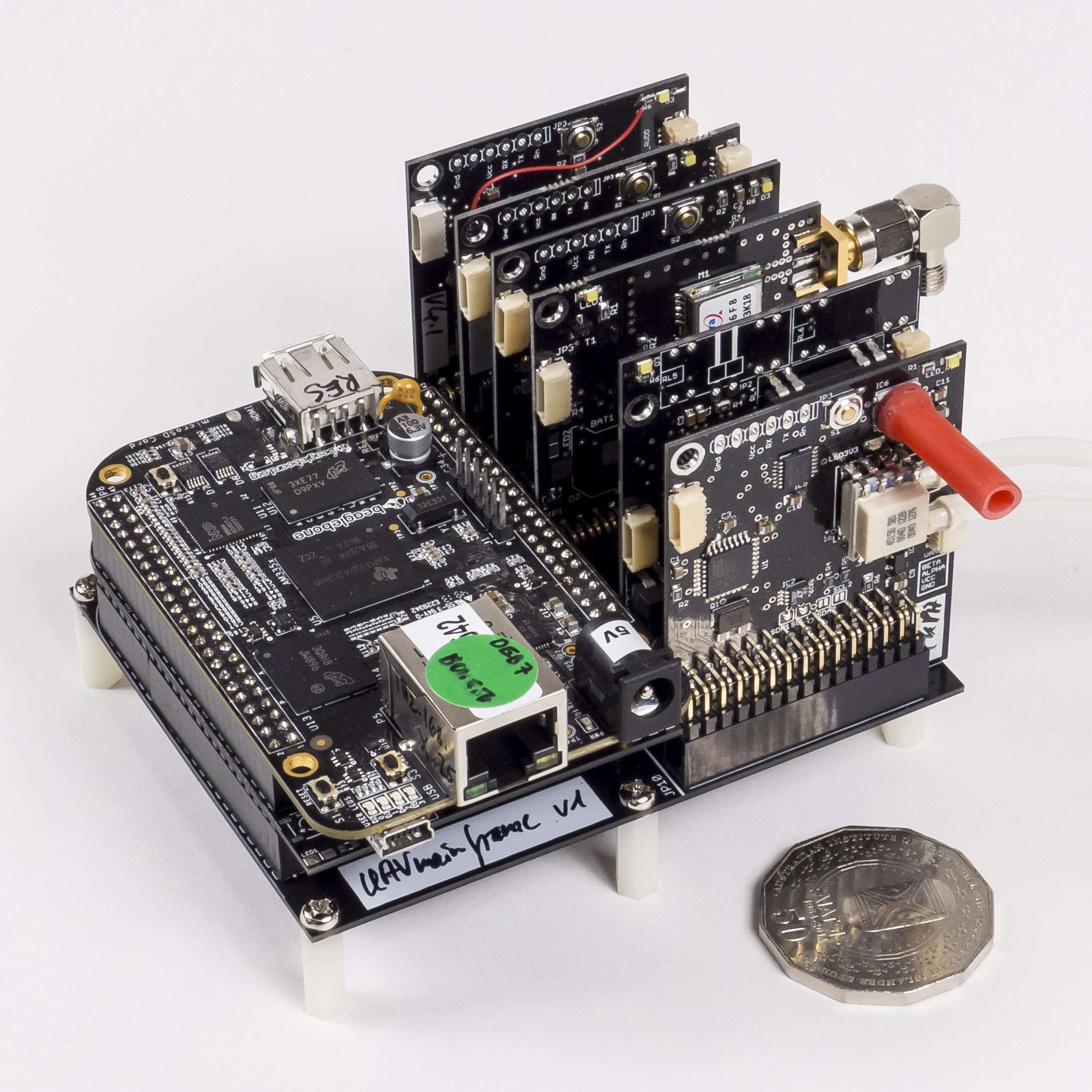
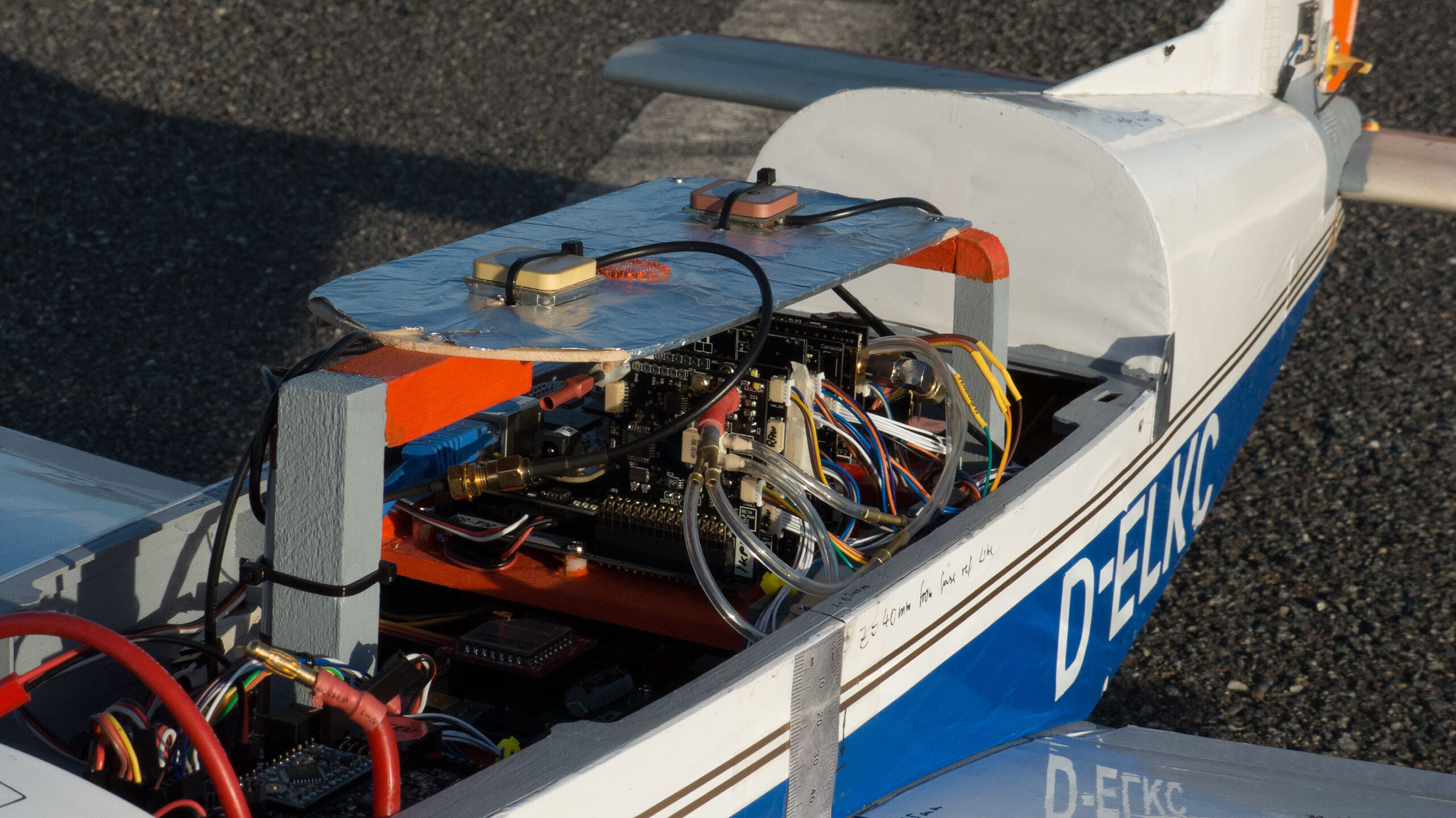
The UAVmainframe
The avionics suite designed for this research was developed in house, since the weight restrictions of the small platform excluded any commercially available flight data recording packages. The system is based upon a single board computer running the Linux operating system. To combine the powerful user interaction and networking features of Linux with real time data acquisition, a synchronised network of real-time sub-processors communicate with the sensors installed in the aircraft and transmit the data to the main computer for recording and further processing. The suite features a lightweight airdata probe, control surface feedback sensors, a custom-designed GPS receiver and many other advanced components previously not possible at this scale. A commercial, miniature reference inertial navigation system (INS) was used to benchmark the system. UAVmainframe also provides flight control and stabilisation functionality to aid the pilot in obtaining the required trim conditions and for turbulence mitigation. Extensive data compatibility analysis and calibrations were performed on the recorded data using a multi-pass Extended Kalman Filter (EKF) and various other methods to ensure the best possible data quality.
Aircraft Inertial Properties
The inertial properties of the test aircraft are required to non-dimensionalise the aerodynamic derivatives during the system identification process. Two methods were compared for the determination of these quantities. The first method used the standard single degree of freedom pendulum method and the second experiment implemented a three degree of freedom pendulum method, which yields the entire inertia tensor from a single swing test. Both methods used system identification of the respective pendulum motion to estimate the inertial properties of the test aircraft.
The significance of the added mass contributions was discovered during these tests, which added up to 25% onto the ‘vacuum’ airframe inertial properties.
In an effort to estimate these added mass terms, it has been found that the methods presented in literature to determine the corrections for full scale aircraft are not applicable for the small scale aircraft under consideration. Swing tests of a flat plate model of the test aircraft also did not capture the magnitude of the phenomenon correctly. This led to swing tests of a geometrically similar 3-d representation of the test aircraft with known inertial properties. The results were used to extract the appropriate added mass corrections by comparing the measurements with the known properties of the body and applying these corrections to the measurements of the test aircraft.
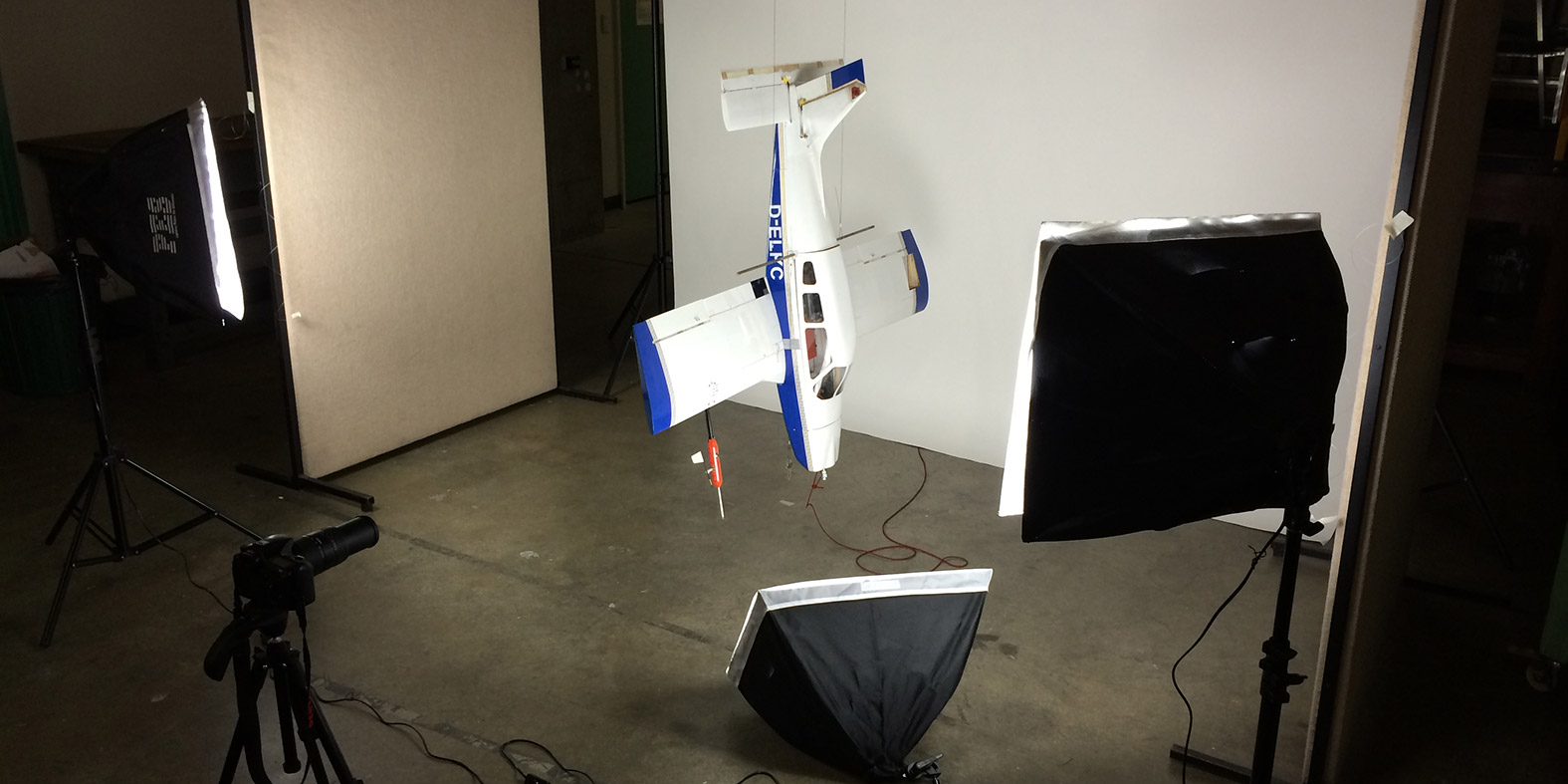
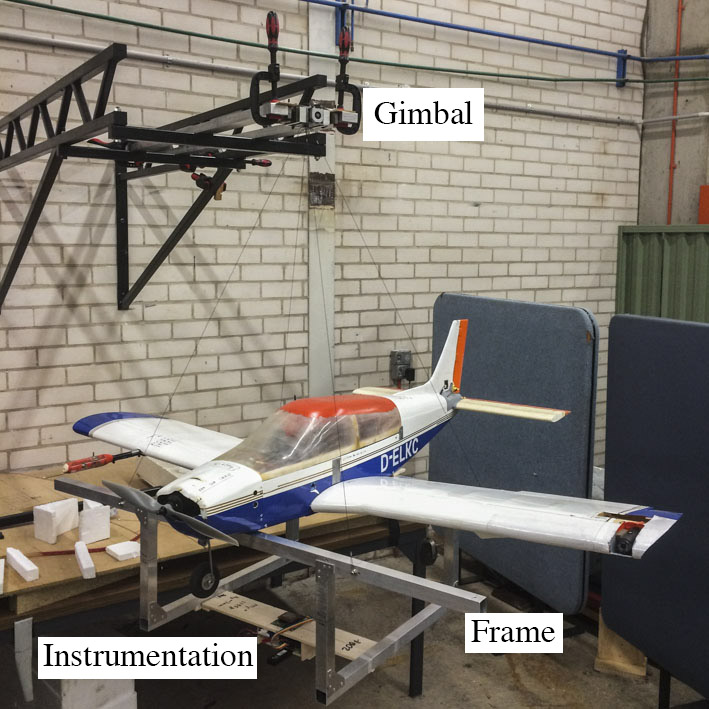
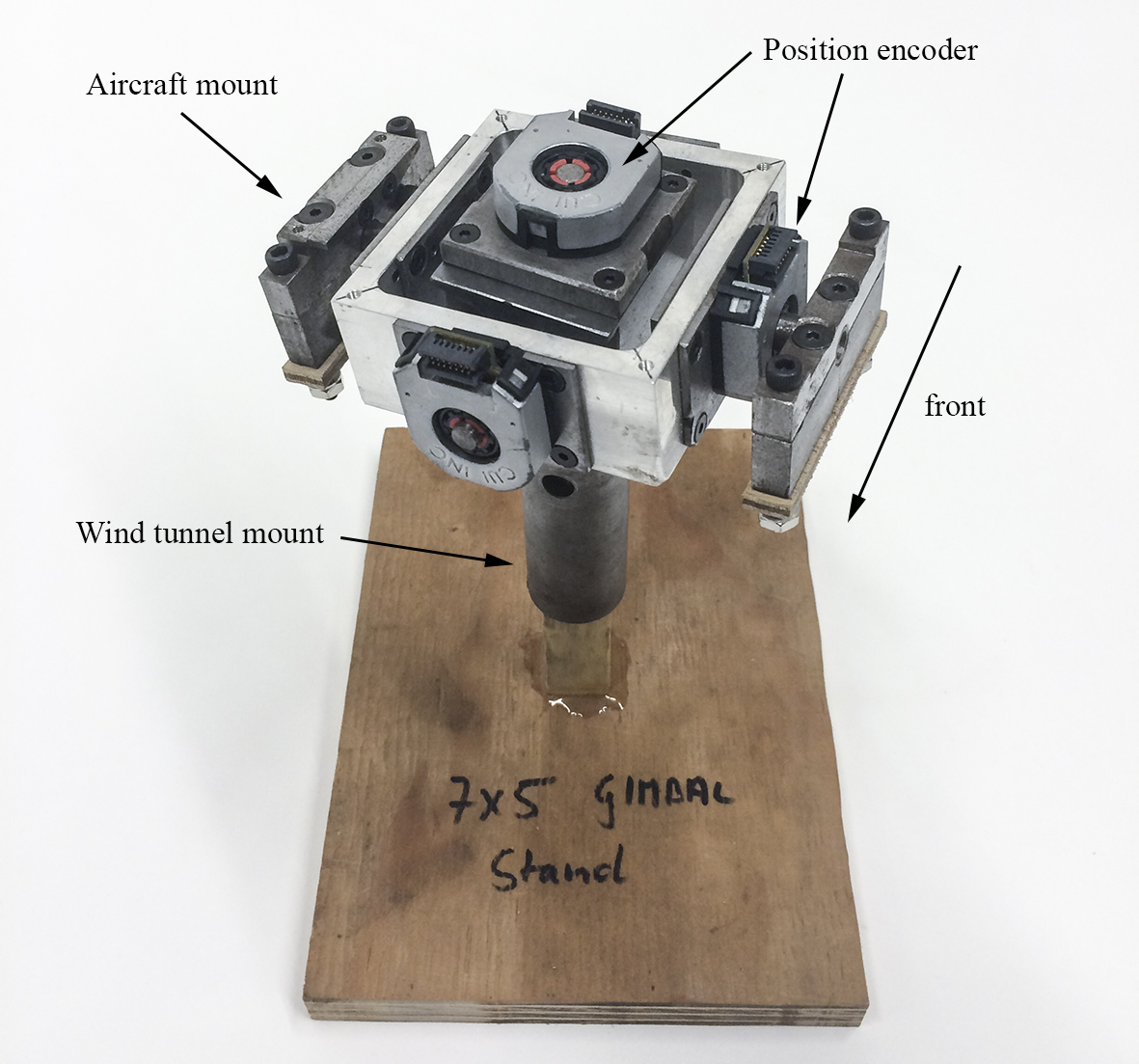
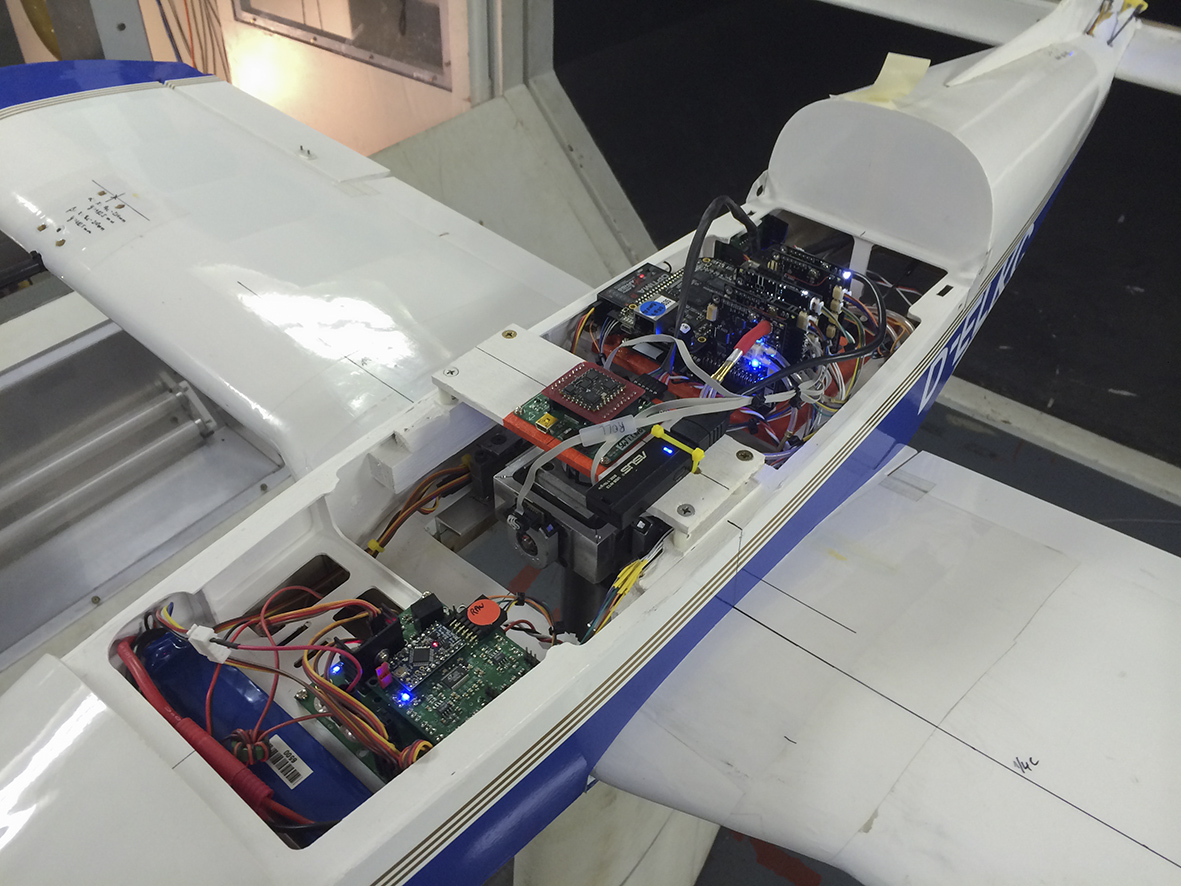


Reference Data
The required reference data includes all static and dynamic derivatives for the airframe as well as the mass moments of inertia estimated in the previous section. Static derivatives were obtained from conventional wind tunnel testing in conjunction with a high fidelity three dimensional inviscid simulation of the wind tunnel environment using the PanAir code. The numerical solution was used to determine the significant wall interference corrections, since the test aircraft was quite large compared to the tunnel size, and the calibration of the airdata probe for wing upwash due to the wall interference.
Dynamic derivatives are difficult to estimate numerically, thus a dynamic test rig was developed to use in the wind tunnel. It allowed the instrumented airframe to rotate freely on a three-axis gimbal, essentially allowing the aircraft to `fly’ in the wind tunnel tunnel. This experiment used the same avionics as the flight tests, so that the system could be extensively tested under controlled conditions prior to flight. Pre-recorded input sequences allowed precise control and repeatability of the manoeuvres performed. The aerodynamic derivatives from these 3 DoF tests were estimated by performing system iden-tification on the recorded motion data. Modified model structures accounted for the reduced set of motion variables, while keeping the parameter definitions com-patible with the free flight case. These test procedures, combined with the high quality of the sensor system, resulted in highly reliable and repeatable reference data for the small airframe.
Flight Testing
Extensive flight testing was performed at the university’s flight test facility. These tests showed the difficulty of testing such a small and light airframe due to wind and airframe noise, as well as the limitations caused by lack of feedback received by the remote pilot. The pilot was aided by the flight control system to achieve good trim conditions, and pre-recorded input sequences, similar to the dynamic wind tunnel tests, were used to excite the longitudinal and lateral dynamics of the aircraft.
One particular finding during the test campaign was that there are never totally calm conditions for this scale of airframe. Therefore, the wind speed and direction was estimated with the EKF and the data-sets with the most steady conditions were selected for the system identification. Two significant findings in the longitudinal axis are the high correlation between the pitch damping term and the pitching moment due to elevator, making it im-possible to determine both at the same time, and that in flight the inertial properties of the test aircraft include the added mass compo-nents, while during the dynamic wind tunnel tests the `vacuum’ inertias have to be used.
If both findings are included in the data processing, close agreement between flight and ground test data has been achieved. Laterally, there is still more work required to determine the optimal input sequences and therefore only some preliminary data can be reported. These preliminary results, however, already confirm that the added mass contributions need to be included for the lateral motion as well to obtain a good correlation with the wind tunnel data.
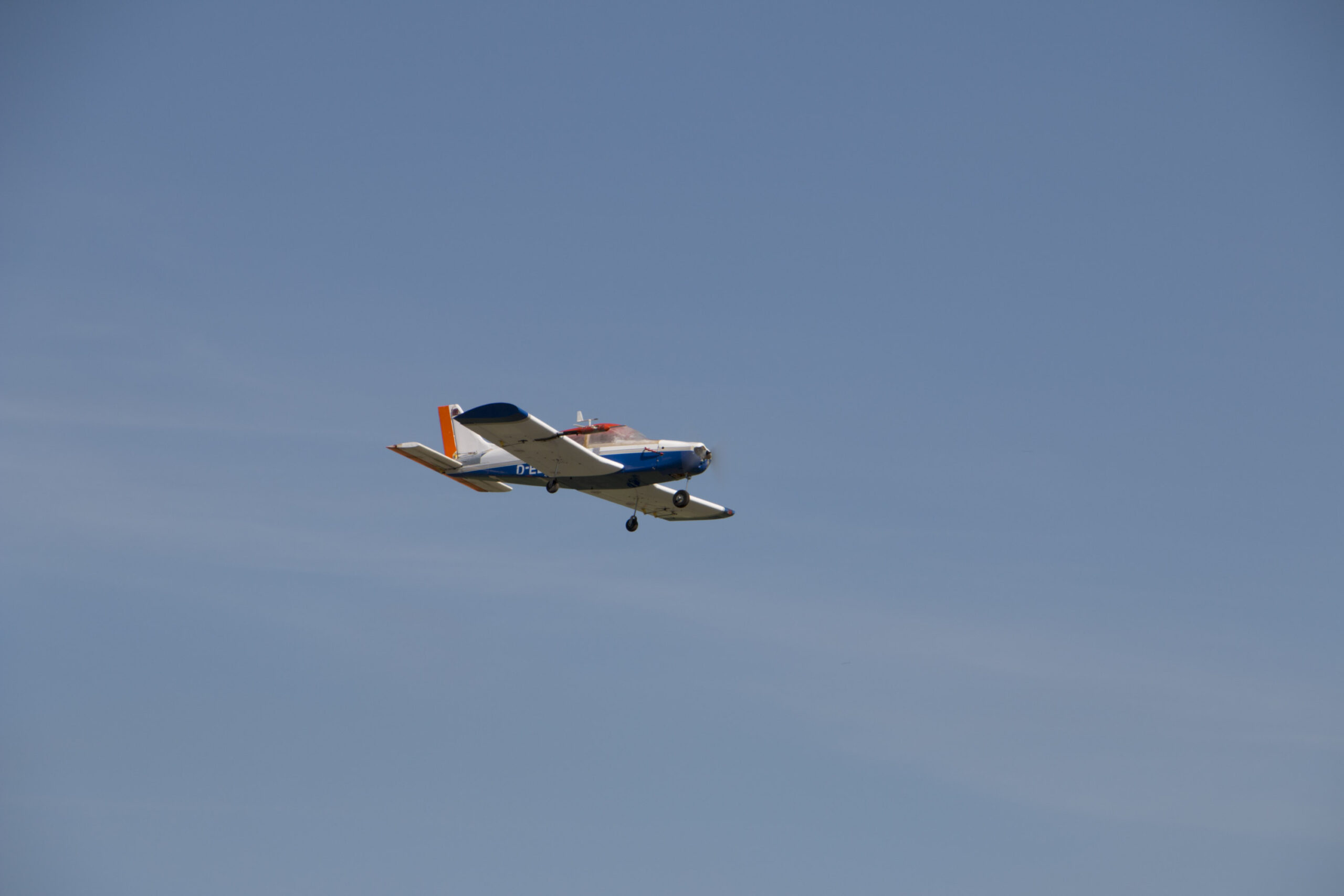
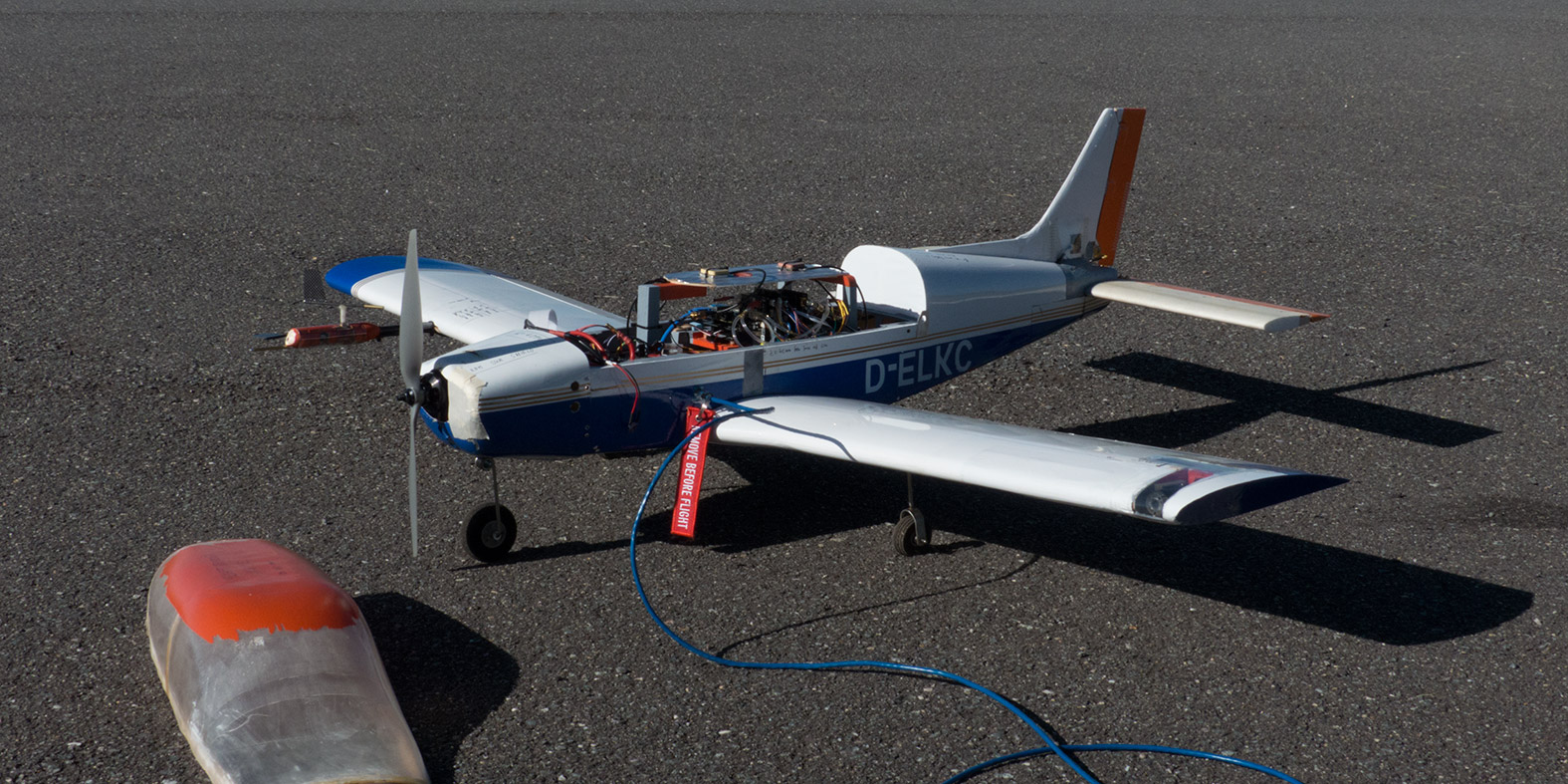
Conclusion
The avionics system has proven highly accurate and reliable. It is well suited to perform flight testing on a new class of small scale aircraft with high accuracy, while having enough reserves for future developments. Flight testing small scale RPAs has proven very difficult, but it can prove successful, if the strategies and methods developed in this research are applied. The results of this project clearly show that the added mass terms are highly significant for a small scale fixed wing aircraft, and they need to be included in all forms of stability and control analysis of flight data, be it for flight control design, flight simulation or any other application requiring the dynamic properties of the aircraft.

